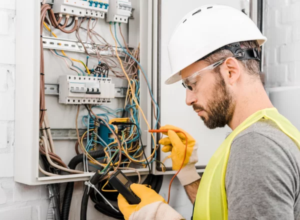Energy independence is a crucial goal for both nations and individuals, enabling them to secure a reliable energy supply and reduce reliance on fossil fuels. Innovative solar solutions are facilitating this transition, transforming the energy landscape and increasing economic and environmental sustainability.
Low-cost Off Grid Solar panels allow homeowners to generate their electricity, lowering their power bills and removing dependence on the grid. Innovative technologies like perovskite-silicon tandem cells maximize energy production even under variable weather conditions.

Home Solar Systems
With home solar systems becoming more affordable with falling solar panel prices and the federal investment tax credit, it’s easier than ever to understand how a residential solar system can help you achieve energy independence. This process involves detaching your household from its dependence on the municipal power grid and producing all of the energy your appliances use through a solar-powered electrical panel. By eliminating your reliance on the power grid, you can avoid rate increases that are consistently levied by utility companies, and create your own clean, renewable energy at a fraction of what it costs to buy power from the local power company.
The key components of any home solar system include solar panels, an inverter, an electric meter, and, of course, the sun itself. Solar panels collect energy from the sun, converting it into DC electricity that can be used by your appliances. An inverter is then installed to convert the DC electricity into AC electricity that can be distributed throughout your home. There are two common types of inverters used in solar homes: string inverters and microinverters.
If your home is generating more electricity than it needs, the excess can be sent back to the power grid in exchange for credits on your electricity bill. This is known as net metering. During the night, when your solar system isn’t producing enough energy, you can still draw power from the grid without worrying about adding to your carbon footprint.
For a more complete and efficient solution, consider installing an Energy Storage System (ESS) in your home. These battery-based power storage systems allow you to store excess electricity generated by your solar panels during the day for use at night or in case of a power outage. These powerful backup batteries can even provide clean, noiseless backup power for your home, as well as EVs.
Solar With Storage Solutions
Energy storage solutions help homeowners to maximize their solar system’s efficiency and benefits. These systems are designed to capture and store excess solar energy that would otherwise go to waste, making it ready for use at any time of day. This allows for a greater amount of power to be produced by the system, resulting in significant financial savings. Energy storage solutions can also be used to provide essential grid services, including load balancing and frequency regulation. These are particularly important as more intermittent renewable energies like solar and wind become integrated into the energy mix.
Boosting your energy independence with solar battery storage can provide you with the ultimate home solar solution, protecting you against rising utility rates and providing cheap electricity all day long. It can also reduce your reliance on expensive peak power during high-demand periods, further helping to lower your energy bills.
If you want to boost your energy independence even further, you can combine solar with storage solutions with a smart EV charger. This innovative EV charger uses solar energy to charge, as well as to store energy for use at night and in bad weather. This is the perfect way to further minimize your reliance on the grid and reduce your carbon footprint and energy costs.
Smart solar-plus-storage technology can help to overcome the barriers to the widespread adoption of solar energy. It can allow the solar industry to offer more equitable financing options for households that don’t qualify for net metering programs or sell-back options, while also promoting self-consumption models that require robust energy storage.
This is the next wave of innovation that solar power providers need to embrace. By leveraging technology such as artificial intelligence and the Internet of Things augmented by storage, providers can improve solar generation, optimize battery management, and achieve operational efficiency. This will enable them to offer better energy storage solutions and deliver the solar-plus-storage experience that customers demand.
Off-Grid Solar Solutions
The goal of many homeowners is to become energy-independent by producing and storing their solar power. This is called off-grid solar energy, and anyone can accomplish it with a combination of solar panels and battery storage. Off-grid solar is also popular amongst people living in remote locations, where it’s not feasible or practical to connect to a centralized grid.
To be energy-independent with solar, it’s essential to have a system that’s properly sized for your household’s power needs and paired with the right type of battery storage. A reputable solar installer can help you determine the size of your solar system and what types of batteries you’ll need for energy storage. They can also help you select a solar array and inverter that will match your energy goals and fit within your budget.
Another important step to becoming energy-independent with solar is to electrify all your appliances and systems. This is especially true for those that require a lot of electricity, such as computers, lighting fixtures and appliances, heating and cooling equipment, and electrical vehicle charging stations. This helps ensure that your solar system can meet all of your electricity needs, and it allows you to reap the full benefits of going solar by reducing your energy costs.
Solar power is one of the most sustainable, renewable, and environmentally friendly energy sources available. It has a lower carbon footprint than fossil fuels and doesn’t produce greenhouse gases. And when you install a solar power system, you’re not only helping to reduce your carbon footprint but also contributing to the global effort to combat climate change.
If you’re serious about achieving energy independence with solar, you can’t go wrong with a hybrid solar power system. Hybrid solar systems combine the best of both grid-tied and off-grid solar technology, offering you the security of a backup utility connection and the flexibility to sell excess power back into the grid for credits on your electric bill.
As environmental consciousness continues to rise, more and more consumers are pursuing innovative solar solutions that enable them to generate and store their energy. However, with many solar companies prioritizing profits over delivering results that meet consumers’ distinct goals, it can be challenging to find a trustworthy partner that will deliver an efficient and cost-effective off-grid solution. Fortunately, ReNew Solar Solutions puts its customers first, providing them with customized off-grid solar solutions that exceed their expectations.
Solar Tracking Systems
The ability of solar panels to capture solar radiation depends on their position in the sun, which is why a tracking system can make such a huge difference in energy production. These systems use sensors and motors to continuously adjust the angle of the panels to match the sun’s position, ensuring that they remain almost perpendicular to the sun’s rays. This maximizes energy production and significantly increases the amount of solar power generated.
As the sun moves across the sky from east to west, the panel’s orientation must also shift. The sun’s path is usually shifted by about 30 degrees, and this decreases the energy that can be captured with fixed panels. A solar tracking system, however, will automatically position the panels to face the sun and boost energy capture by 25% or more compared to stationary panels.
Solar tracking systems are available in several configurations to meet the needs of different energy-producing projects. They can be used for residential solar, commercial and industrial purposes, or even at utility-scale solar farms. Two common types are single- and dual-axis solar trackers.
Single-axis solar trackers are usually used in utility-scale installations and can increase energy production by up to 35%. These systems can be used on both ground-mounted and roof installations, and they are particularly useful in climates with a lot of sun. They can be combined with bifacial solar panels, which are designed to collect both direct and reflected sunlight.
The energy that is produced by a solar panel is dependent on the temperature of its cells, so a tracked system can help reduce thermal losses by keeping the panels’ surface facing the sun at a precise angle. In addition, the solar tracking system can improve efficiency by reducing the amount of time that the panels are exposed to shade from trees or buildings.
Active tracking systems use hydraulic cylinders or motors to rotate the panels. While this allows them to adjust quickly and easily, the multiple moving parts can be at a higher risk of breaking, which could increase maintenance costs over the long term. Another disadvantage is that these systems are typically more expensive than fixed panels. However, the high return on investment and increased energy output can offset the upfront cost and lead to a quicker payback period.

